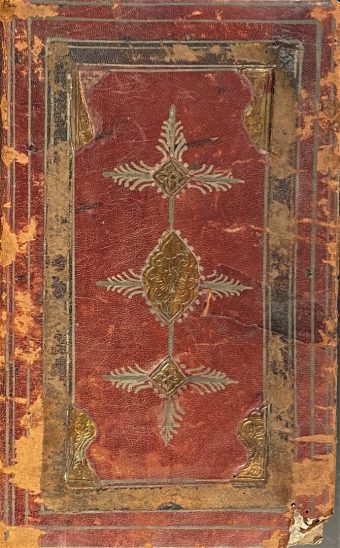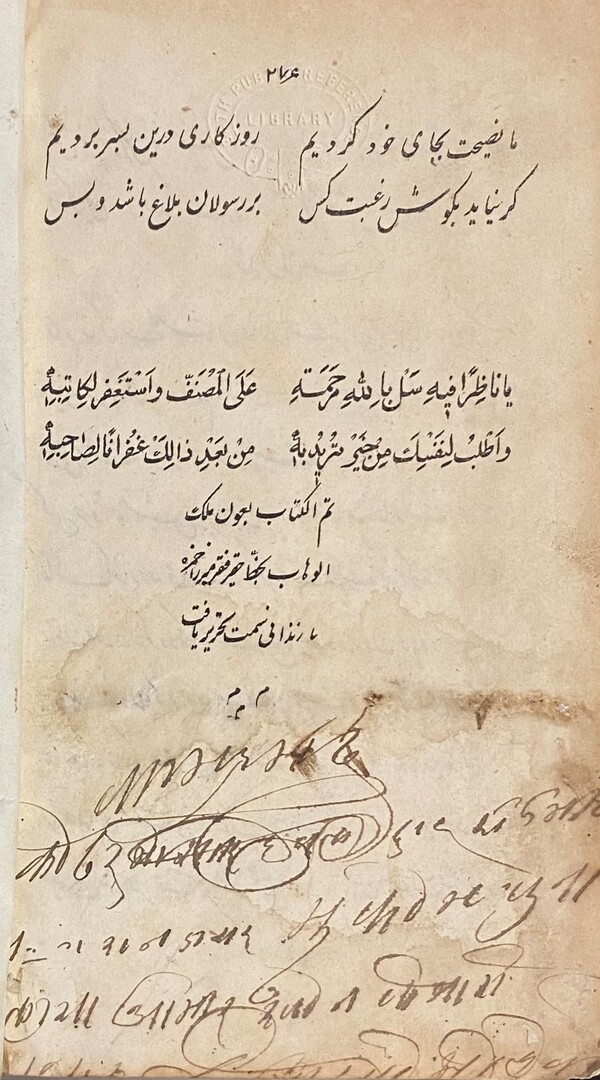Kitab Goolistan of Sa’di. [Gulistan]. [گُلِستان].
Sa’di, Mulish al-Din Shirazi.
Synopsis
An early and first lithographed Bombay edition of the famous book of Sa’di. Graphic edition of the Gulistan, The Gulistan means ‘the rose garden’ and the text is divided into eight chapters called babs (gates) corresponding to the eight gates to the garden of paradise. It is a moralistic and anecdotal work mostly written in hikayats (short prose vignettes) combined with verse. These are light and humorous in tone, particularly in comparison to his earlier work, the Bustan. The poet writes in the Gulistan’s epilogue that his aim was to deliver advice in palatable form. It was used as textbook for education for centuries across the Persian-speaking world and was the primary text of Persian language instruction of East India Company officers at Fort William College in Calcutta and at Haileybury College in England.
The Gulestan has been significant in the influence of Persian literature on Western culture. La Fontaine based his “Le songe d’un habitant du Mogol” on a story from Gulestan chapter 2 story 16: A certain pious man in a dream beheld a king in paradise and a devotee in hell. He inquired, “What is the reason of the exaltation of the one, and the cause of the degradation of the other? for I had imagined just the reverse.” They said, “That king is now in paradise owing to his friendship for darwishes, and this recluse is in hell through frequenting the presence of kings.”
The only earlier lithographic editions of the Gulistan are the three produced at Calcutta’s Asiatic Lithographic Press between 1827 and 1830. Later lithographed editions were produced in Iran when lithographic printing was introduced in the 1830s.








